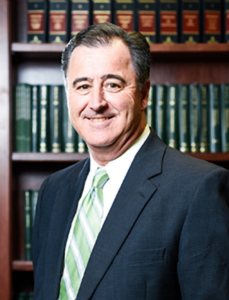
As 2020 comes to a close, it will be long remembered as a year that has tested our strength and faith. With many major religious holidays celebrated this time of year, let us focus on joy, happiness, hope, friends and family. Our diverse community celebrates in various ways with long-standing traditions.
Our Hindu Community celebrated Diwali on Nov. 14. Known as the “festival of lights,” Diwali commemorates the return of Lord Rama from his 14 year-long exile and the vanquishing of the demon-king Ravana. In joyous celebration of the return of their king, the people of Ajodhya, the Capital of Rama, illuminated the kingdom with oil lamps and burst firecrackers. Diwali also marks the victory of good over evil.
Our Buddhist Community celebrated Bodhi Day on Dec 8. It recognizes the day that the historical Buddha experienced enlightenment.
Hanukkah is celebrated for eight days and nights and started on Dec. 10. The word “Hanukkah” means “dedication” in Hebrew. On each night of Hanukkah, the menorah is lit to commemorate a miracle which occurred after the Jews proclaimed victory over the Syrian Armies in 165 B.C.E. Other traditions associated with Hanukkah are dreidels (a popular game), latkes (tasty potato pancakes) and sufganiyots (jelly doughnuts without the hole).
The origin of Christmas was to celebrate the birth of Jesus. However, Christmas, as we know it today, is a Victorian invention of the 1860s and celebrated every Dec. 25. Probably the most celebrated holiday in the world, our modern Christmas is a product of hundreds of years of both secular and religious traditions. In our culture, Christmas has also become a time to exchange gifts. The popular image of Santa Claus was created by a German American cartoonist, Thomas Nast, who drew a different image annually, beginning in 1863. By the 1880s, Nast’s Santa had evolved into the form we now recognize. The image was standardized by advertisers in the 1920s.
There is no greater symbol of the Filipino Christmas than the “parol.” Throughout the Christmas season, this star-shaped lantern hangs outside Filipino homes and is an expression of shared faith and hope. The “parol” was originally used in the Philippines to light the way to church to attend the “Misa de Gallo,” or the “Mass of the Rooster.” This Mass is held annually at dawn on Dec. 16 and is the official start of the Filipino Christmas season.
Kwanzaa is a unique African-American celebration which focuses on community responsibility, commerce and self-improvement. Kwanzaa is neither political nor religious and is not meant to be a substitute for Christmas. It is simply a time of reaffirming African-American people, their ancestors and culture. Kwanzaa means “first fruits of the harvest” in the African language Kiswahili. It is celebrated Dec. 26 through Jan. 1 and was started in 1966 by Dr. Maulana Kareenga.
We could all use a little humor these days. For all the Seinfeld fans, Dec. 23 is Festivus, a holiday created “for the rest of us” as an alternative to Christmas.
On behalf of the Township Committee, Happy Holidays, Feliz Navidad (Spanish), Joyeux Noel (French), Kala Christouyenna (Greek), Nollaig Shone Dhuit (Irish), Buone Feste Natalizie (Italian), Maligayan Paskol (Filipino), Bozego Narodzenie (Polish), Mele Kalikimaka (Hawaiian) and Natale hiare et Annum Faustum (Latin).
The holidays mean happiness in any language. Happy holidays to all!
** Visit Santa at the Voorhees Town Center from Dec. 3 through Christmas Eve. Masks will be required and social distancing will be observed. Reservations to visit Santa are strongly encouraged. Walk-up visits will be available as space allows throughout the day. Pet visits will not be available this year. For more information, visit whereissanta.com/newjersey/voorheestowncenter.










